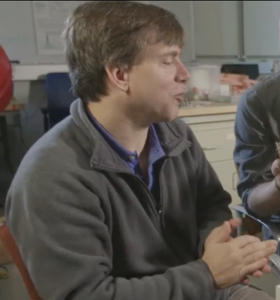For the past 12 years, assistant professor of mechanical engineering and material science Dr. Corey O’Hern has been studying how inanimate objects jam. Jamming is the study of how objects stop flowing and then begin flowing again.
During his career at Yale, O’Hern has received a number of research grants to study this subject. His most recent award was a $20,000 subsidy from the National Science Foundation to fly researchers from the United States to Madrid for a research symposium on jamming, which will take place July 6-10. The symposium will coincide with the conference for the European Society of Mechanics, which meets every two years.
Jamming may seem like an abstract concept, but it is something most people observe at least a few times a year. One situation in which jamming occurs is when sand flows out of a sieve or an hourglass. “If you watch it, it actually undergoes this behavior where it will stop and then undergo this micro-avalanche in the hour glass and then it will start again,” O’Hern said.

Even the simplest jamming problems have far-reaching applications. Sand pouring out of an hourglass can serve as a model system for an earthquake or a landslide. Jamming also has applications in other fields, such as biology and chemistry. The jamming patterns derived from studying sand piles can be used to understand the packing and arrangement of atoms within a protein.
One of the main purposes of the Madrid symposium is to spark collaboration between European and American jamming researchers. “There tends to be both a literal and figurative ocean between U.S. and European researchers,” O’Hern said.
This divide hinders scientific progress because different research groups inevitably form different or contradicting theories on jamming. O’Hern intends to use the symposium to promote scientific collaboration across the Atlantic by facilitating researcher interactions and the discussion of common scientific goals. He aims to “unjam” the grains of jamming research.
